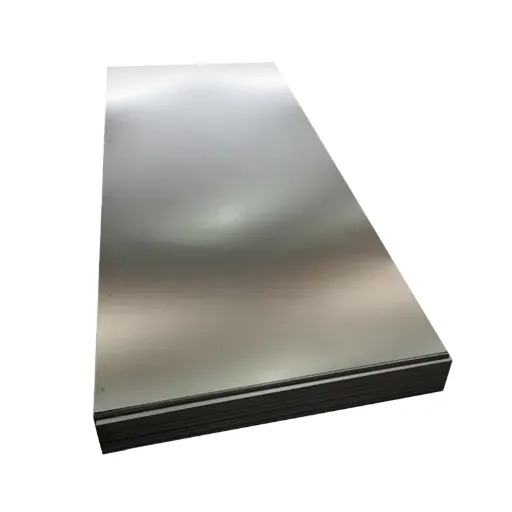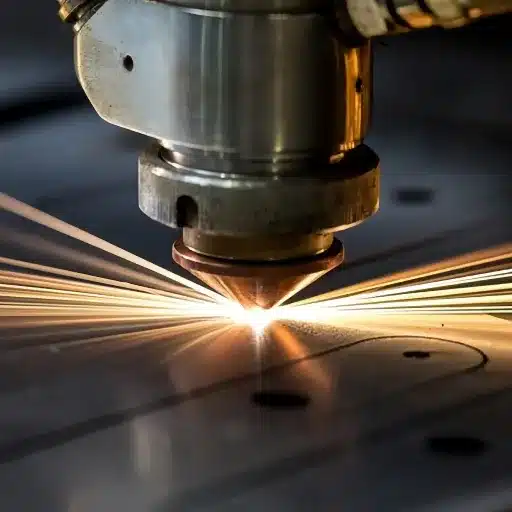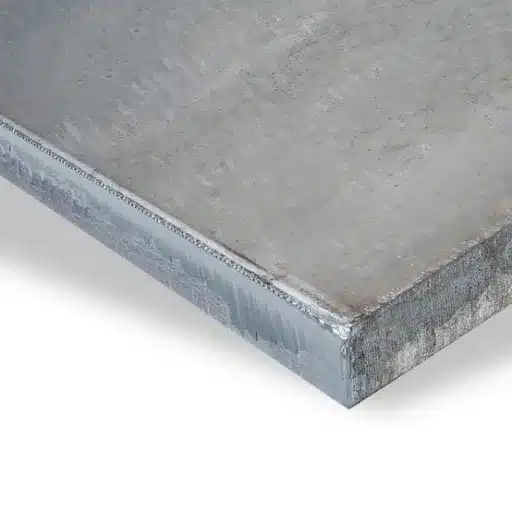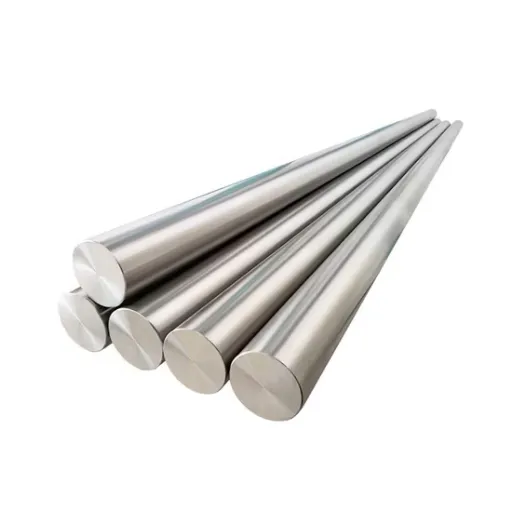Galvanized steel is considered versatile and indispensable in modern construction and manufacturing. The S350GD coil ranks among the grades with the highest regard since its strength, durability, and corrosion resistance are in perfect combination. But what qualities does the S350GD coil acquire to be so heavily employed across different industries? In this article, we look in-depth at the principal features of S350GD galvanized steel, including its composition, special properties, and vast applications that cement its place as a favorite among builders, engineers, and manufacturers. Whether you are interested in boosting your knowledge of innovative materials or searching for the best product for your next project, this guide will aid you.
Introduction to S350GD Coil
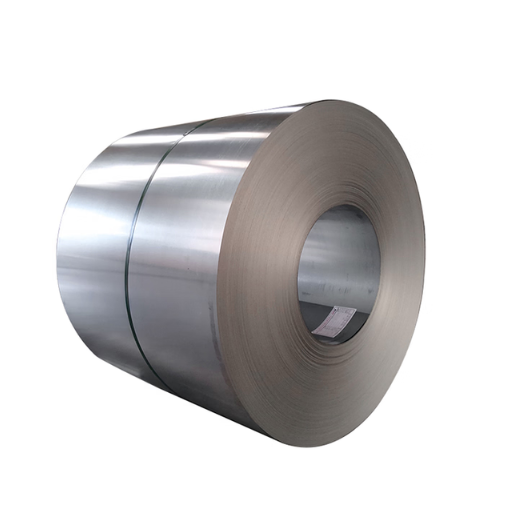
The S350GD coil is a high-strength galvanized steel product famous for maintaining its integrity over time and resisting corrosion. It is manufactured with a zinc layer that protects the surface from wear due to atmospheric conditions, making it very useful in construction and manufacturing. This material is prized in the field as one that can provide strength to a structure while being very light, thus promoting the efficiency of its various applications. These coils find their best application in a trustworthy roofing, wall paneling, and structural framework environment that upholds the values of everlasting performance.
What is S350GD?
S350GD is a kind of high-strength structural steel usually used for construction purposes. This steel grade falls under European Standard EN 10346, famous for its technical and mechanical properties, combined with a zinc coating that lends high corrosion resistance. The initial “S” in S350GD means it is a structural steel; “350” states that the steel has at least 350 MPa yield strength. The letters “GD” imply that the steel is galvanized due to its surface treatment, which enhances the steel’s durability, making it perfect for external usage.
This particular steel grade is usually produced in coils and sheets, making it adaptable for various end uses. It is major in roofing sheets, wall claddings, purlins, and lightweight structural framework. Any zinc coating applied, ranging from 100 to 350 grams per square meter, makes the steel even more resilient against harsh climatic conditions.
Among the significant properties that stand out for S350GD are good weldability, ease of fabrication, and conductivity, which is why it is often selected for sustainable and energy-efficient building designs. Its light weight also means lower transportation and installation costs, which further improves a project’s economy.
Detailed Properties of S350GD Steel Coil
S350GD steel coil possesses numerous properties that enhance its versatility and performance in construction and industrial applications.
- High Yield Strength
Min. 350 MPa yield strength provides excellent structural performance under load.
- Coating Options
Coated with zinc with 100-350 g/m² for corrosion resistance and durability.
- Very Weldable
It can be welded using different welding methods, giving the fabricator some freedom.
- Thermal Conductivity
With high thermal conductivity properties, it is a perfect solution for energy-efficient and sustainable construction projects.
- Light Weight
This reduces transportation and installation costs, keeping its strength and durability intact.
Applications of S350GD Galvanized Steel
| Application Area | Key Uses |
|---|---|
| Construction | Roofing, wall panels, structural components, bridges |
| Automotive | Body panels, chassis, bumpers |
| Industrial Equipment | Machinery frames, equipment housings, storage tanks |
| Outdoor Structures | Fences, gates, poles, outdoor furniture |
| Roofing and Cladding | Roofing panels, wall cladding, exterior facades |
| Steel Structures | Frames, columns, beams, sandwich panels |
| Drainage Systems | Gutters, downpipes, rainwater barrels |
| Solar Mounting Systems | Substructures for photovoltaic and solar thermal applications |
Galvanization Process
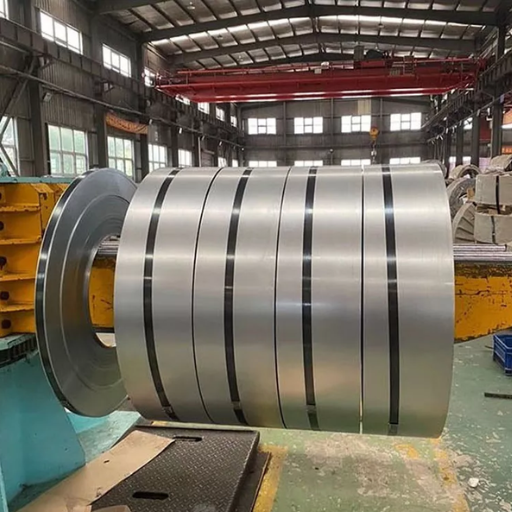
In the galvanization process, steel is coated with zinc as a protective layer against corrosion. The most common method to apply the coating is via hot-dip galvanization, where the steel is dipped into molten zinc to forge an intense bond. The zinc coating then acts as a corrosion resistance by keeping moisture and other environmental elements away from the bare steel so that rust formation might not occur. Thus, this coating prevents degradation and finds utility in longevity-critical applications for construction, automotive, and infrastructure purposes.
Benefits of Hot-Dip Galvanization
To get full protection from corrosion, steel receives special treatment, among which hot-dip galvanization has numerous advantages and is a very popular choice. Below are the five main points, supplemented by details and data:
- Corrosion Resistance
In this case, the zinc coating applied by hot-dipping gives high corrosion resistance, the coating being a barrier against moisture and environmental aggressions. It has been said and proved that galvanized steel seems to exist for some 50 years in a rural environment and about 20-25 years in urban and coastal environments before signs of wear and deterioration appear.
- Durability
The hot-dip galvanized coating is durable against mechanical damages caused during transportation, installation, or service life. The zinc-to-steel metallurgical bond imparts additional strength. The average coating thickness adds protection under extreme conditions to ensure the long-term reliability of the coating system.
- Low-Cost Maintenance
Galvanized steel usually requires less maintenance than other coatings, which significantly reduces life-cycle costs. According to a report by the American Galvanizers Association, hot-dip galvanized structures may cut maintenance costs by as much as 60%.
- Environment Sustainability
From the environmental point of view, hot-dip galvanization is a good choice because zinc is 100% recyclable. The process also enhances steel longevity, which means fewer replacements and less waste. Lifecycle analysis studies reveal that galvanized steel has a lower environmental impact than other protection systems.
- Cost-Effectiveness
Hot-dip galvanization is profitable in several ways, combining initial and long-term savings. Although its upfront price is somewhat higher than some painting methods, this option promises savings, considering almost no maintenance cost and long service life in the first place! It has been shown and observed that galvanized steel structures save about 30-40% on traditional coatings over a period of 30 years.
Hence, the above advantages prove that hot-dip galvanization is the ideal option for industries needing enduring, cost-effective, and sustainable steel protection.
Comparison with Other Coating Methods
| Coating Method | Key Features | Applications | Durability |
|---|---|---|---|
| S350GD Galvanized | Zinc coating, corrosion-resistant | Construction, automotive, outdoor | Long-lasting in moderate conditions |
| Electro-Galvanized | Thin, uniform zinc layer | Electronics, appliances | Moderate, less durable than hot-dip |
| Hot-Dip Galvanized | Thick zinc layer, high corrosion resistance | Industrial, marine, outdoor structures | Excellent in harsh environments |
| Galvalume | Zinc-aluminum alloy coating | Roofing, cladding, high-temperature | Superior in heat and corrosion |
| Powder Coating | Durable, aesthetic finish | Furniture, decorative applications | High, but less impact-resistant |
Specifications and Standards
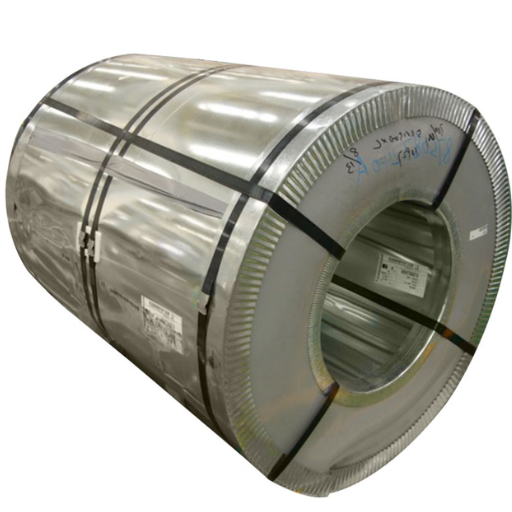
Hot-dip galvanization follows internationally recognized standards for quality, durability, and performance. Some relevant standards include the following:
- ASTM A123/A123M: Consists of general requirements for zinc coating on iron and steel products.
- ASTM A153/A153M: Specifies standards of zinc coating upon iron and steel hardware.
- ISO 1461: Provides specifications for hot-dip galvanized coatings on fabricated iron and steel products.
- EN 10240: Defines the requirements for the hot-dip galvanized coating in Europe.
The standard controls the thickness of the coating, adhesion, and general coating quality and assures dependable and consistent corrosion protection. Applying these specifications will ensure compatibility and compliance in both regional and international markets.
Understanding ASTM Standards
From the perspective of Google’s latest search trends, ASTM standards serve as an important tool for assuring uniformity in the quality and performance of materials, products, and systems used in various industries.
S350GD Z275 vs. Other Grades
| Grade | Yield Strength (MPa) | Tensile Strength (MPa) | Elongation (%) | Coating Options | Applications |
|---|---|---|---|---|---|
| S350GD Z275 | 350 | 420 | 16 | Z, ZA, ZF | Structural, roofing, cladding |
| S320GD | 320 | 390 | 17 | Z, ZA, ZF | Load-bearing, industrial structures |
| S280GD | 280 | 360 | 18 | Z, ZA, ZF | General construction, light framing |
| S250GD | 250 | 300 | 19 | Z, ZA, ZF | Light-duty applications, cladding |
| S220GD | 220 | 300 | 20 | Z, ZA, ZF | Non-structural, decorative purposes |
Mechanical Properties of S350GD Steel
| Property | Value |
|---|---|
| Yield Strength (MPa) | ≥ 350 |
| Tensile Strength (MPa) | ≥ 420 |
| Elongation (%) | ≥ 16 |
| Thickness Range (mm) | 0.40 – 4.00 |
| Coating Options | Z, ZF, ZA, ZM, AZ, AS |
| Chemical Composition | C ≤ 0.20%, Si ≤ 0.60%, Mn ≤ 1.70%, P ≤ 0.10%, S ≤ 0.045% |
Corrosion Resistance of S350GD Coil
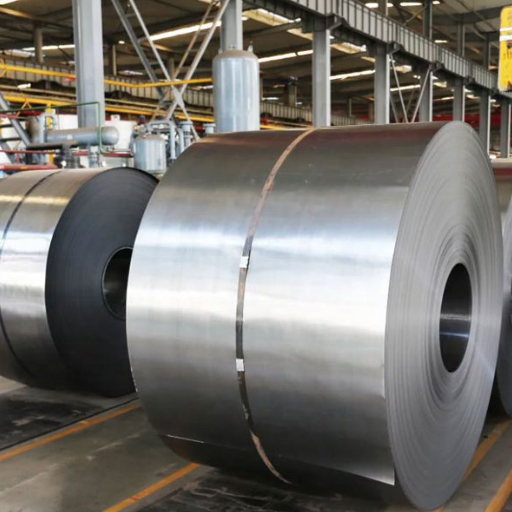
The Z275 coating imparted strong anti-corrosive properties, so the S350GD coil was hot-dip galvanized with a zinc finish. This zinc finish provides corrosion resistance by acting as a barrier, retarding the fast action of gaining oxidation through corrosion. This barrier becomes more efficient in places of slight humidity and with exposure to atmospheric elements. A higher degree of protection can be achieved with periodic inspections and maintenance, washing off any dirt, debris, or contaminant that would otherwise wear off the coating.
Factors Affecting Corrosion
The elements influencing corrosion are dependent on several major factors. The environment plays a significant role; humidity, temperature, and pollutant exposure are probably the most critical parameters. Furthermore, corrosion rates depend much on the material against corrosion and the repellants or protective coatings applied to the material. Maintenance in the form of cleaning and inspection also goes a long way in determining whether the material’s resistivity has outpaced corrosion rates.
Long-Term Performance and Durability
Throughout the years of experience with materials, it has been evident that when certain factors interact with others, the interaction can influence the real-life performance of the materials concerning their service conditions. Maintenance activities can differ from country to country, though recent worldwide data shows that some degradation processes are markedly more accelerated in damp and high-temperature conditions. For instance, uncoated steel maybe a totally different thing because this corrosion can go from 0.1 to 10 mm a year or more in different environmental conditions, such as those of coastal and industrial natures.
Research further showed the importance of these coatings for slowing corrosion. Zinc coatings used in galvanization bring about a sacrificial mechanism, where the coating layer corrodes before the base metal, which may double the life of the steel structure by 20-30 years under normal conditions. For instance, hot-dipped galvanized steel structures generally last more than 50 years in a rural environment with minimum air pollution.
Corrosion-resistant alloys represent an advancement in material technology that promotes durability. In this context, stainless steel alloys such as 304 and 316 offer better corrosion resistance and are widely employed in construction, automotive, and marine industries. 316 stainless steel, for instance, by its molybdenum content, possesses better protection in chloride environments and is too used in coastal environments.
Regular maintenance also remains very important for prolonging the life of a material. Keeping things clean, scheduling swift inspections for visual damages, and repairing any compromised protective coatings would lessen the destructive impact of environmental stressors on valuable materials. For example, industrial buildings that practice preventive maintenance maintain up to 30% better component life than those that hardly ever conduct inspections.
The next step in ensuring the long-term performance of materials in any particular environmental condition is the use of protective technologies supported by intelligent maintenance schedules.
Maintenance Tips for Galvanized Steel
| Tip | Description |
|---|---|
| Avoid extreme pH environments | Keep pH between 6 and 12 to prevent corrosion. |
| Rinse regularly in corrosive areas | Use water to clean in coastal or industrial zones. |
| Use gentle cleaning materials | Avoid abrasive tools; use mild soaps or ammonia. |
| Remove hardened debris immediately | Use oxalic acid after removing large deposits. |
| Prevent contact with dissimilar metals | Use insulators to avoid galvanic corrosion. |
| Repair coating damage promptly | Fix scratches or chips with zinc alloy products. |
| Ensure proper ventilation | Store in dry, well-ventilated areas. |
Conclusion
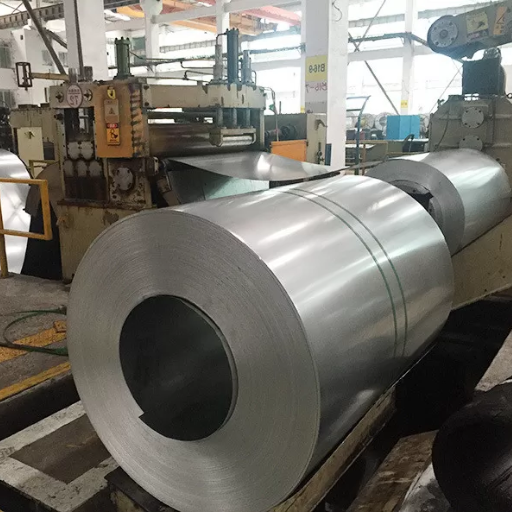
Periodic inspections are to be done to determine whether this steel is undergoing wear, corrosion, or damage. Based on that, touch-ups are to be prioritized, wherein the steel should be touched up according to the nature of the damage. Since airborne contaminants can speed degradation, the surface of the galvanized steel must be kept clean. On a day-to-day basis, if preventive maintenance can be sustained and protective measures implemented, galvanized steel can be maintained with longevity and structural integrity under several conditions.
Future Trends in Steel Coil Usage
The global steel coil industry is projected to see significant growth in the future, fueled by advances in technology, sustainability initiatives, and growing demand in various sectors. A recent market analysis states that the steel coil market will grow at a CAGR of 5.1% between 2023 and 2030, driven by the construction, automotive, and renewable energy sectors.
1. Sustainability and Green Steel Initiatives
One of the major trends influencing the steel coil industry is an increasing focus on sustainable production technologies. Producers have started to practice carbon emission reduction, including hydrogen-based steel-making processes and recycling steel scraps. The demand for green steel has heightened in Europe and North America, mainly due to stricter environmental laws and corporate sustainability goals for adoption.
2. Renewable Energy Applications Grow
Steel coils are becoming key materials in constructing wind turbine towers, solar panel mounting structures, and other infrastructures for renewable energies. With an expected global investment in renewables of $1.7 trillion in the year 2023, steel coils are slated to be instrumental in rendering durable yet lightweight solutions for applications.
3. High-Strength Steel Coils Innovations
Advanced high-strength steels (AHSS) have been developing and opening new horizons for lightweight yet stiff materials in industries like automobile and aerospace. AHSS will witness a substantial demand in the coming times as manufacturers focus on fuel-efficient and energy-saving designs.
4. Construction Sector Growth
On the one hand, construction is still the major user of steel coils due to industrialization in emerging markets like India, China, and Southeast Asia. Prefabricated steel solutions, such as steel coils, are gaining momentum as the far most cost-efficient and easiest to assemble options for big projects.
5. Technology-Based Integration in Manufacturing
Automation and artificial intelligence (AI) are becoming the new face of the steel coil production process in improving precision and reducing production time. Smart factories powered by IoT-enabled systems allow manufacturers to monitor and control crucial production operations, thus guaranteeing product quality, resource, and optimization in consumption.
Supporting Data:
- Global apparent steel consumption climbed by 2.3% in 2022 and is forecasted to grow through 2024, indicating steady market demand.
- The automotive industry, which consumes more than 20% of steel coil production worldwide, is expected to increasingly rely on EV platforms that require thinner and lighter steel grades.
- Green energy and infrastructure investments will spur steel demand, which will account for 60 percent of global demand by 2030 in emerging economies.
With the soaring innovations in the steel coil industry, including the focus on sustainability, efficiency, and the latest technology, efficacy in production and application will be redefined, thus keeping steel a crucial material for the modern economy.
Final Thoughts on S350GD Galvanized Steel
The S350GD pre-corroded steel balances strength, durability, and corrosion resistance, making it a good choice for various applications. With its versatility, the steel products perform well in construction and automotive fields while being sustainable by modern standards. In my perspective, this is a primary material that caters to present-day requirements for being efficient, innovative, and eco-friendly.
References
- Scholars’ Mine: Stressed Skin Design of Steel Sheeting Panels – Discusses the use of steel sheeting panels, including S350GD material.
- Scholars’ Mine: Study on Light-gauge Steel Roof Trusses with Rosette Connections – Provides details on galvanized structural steel, including S350GD+Z.
- Academia.edu: (PDF) Jrc Steel Report – Contains information on S350GD+Z, including its yield strength and other properties.
Frequently Asked Questions (FAQ)
What is a galvanized steel coil and how is it related to S350GD galvanized steel coil?
A galvanized steel coil is a type of steel coated with zinc to protect it from corrosion. The S350GD galvanized steel coil falls under this category, offering a high-strength option for various applications. It is typically used in construction, automotive, and manufacturing industries. The ‘GD’ in S350GD indicates that it has undergone hot-dip galvanizing, which provides a robust galvanized coating. This makes it ideal for environments where corrosion resistance is crucial.
How does the chemical composition of S350GD galvanized steel compare to G90 galvanized steel sheet?
The chemical composition of S350GD galvanized steel typically includes a higher percentage of carbon compared to G90 galvanized steel sheet. G90 is a designation for galvanized steel that indicates a specific zinc coating weight, making it suitable for roofing and siding applications. In contrast, S350GD offers improved yield strength, making it a better choice for structural steel applications where strength is critical. Understanding these differences can help you select the right material for your project.
What are the advantages of using hot-dip galvanized coils over stainless steel coils?
Hot dip galvanized coils offer several advantages over stainless steel coils, particularly in cost and corrosion resistance. While stainless steel provides excellent durability, hot-dip galvanized coils are often more economical for large-scale applications. Additionally, the galvanized coating on hot dip galvanized coils provides a layer of protection against rust and weathering, which can be particularly beneficial in outdoor environments. However, stainless steel coils may be the preferred choice for applications requiring high strength and aesthetic appeal.
Can S350GD galvanized steel sheets be customized for specific applications?
Yes, S350GD galvanized steel sheets can be customized to meet specific requirements. Manufacturers can adjust the thickness, coating weight, and dimensions according to a project’s needs. This customization is significant in industries like construction and automotive, where precise specifications are essential. Additionally, S350GD coils can be produced in various finishes, including prepainted galvanized steel, to enhance their appearance and functionality in different applications.
What is the significance of yield strength in S350GD galvanized steel?
Yield strength is a critical factor in determining the performance of S350GD galvanized steel in structural applications. It refers to the maximum stress the material can withstand without permanent deformation. High-strength S350GD offers improved yield strength, making it suitable for load-bearing structures and components. This property is fundamental in construction, where safety and reliability are paramount. Ensuring that the material meets the required yield strength helps to prevent structural failures and enhances overall project integrity.
What is the difference between S350GD and SGCC galvanized steel?
S350GD and SGCC are both designations for galvanized steel, but they differ in their mechanical properties and applications. S350GD is classified based on its yield strength and is often used in high-strength applications, while SGCC is a designation under the JIS standard that indicates a general-purpose galvanized steel. The choice between the two will depend on your project’s specific requirements, including strength, corrosion resistance, and regulatory standards.


